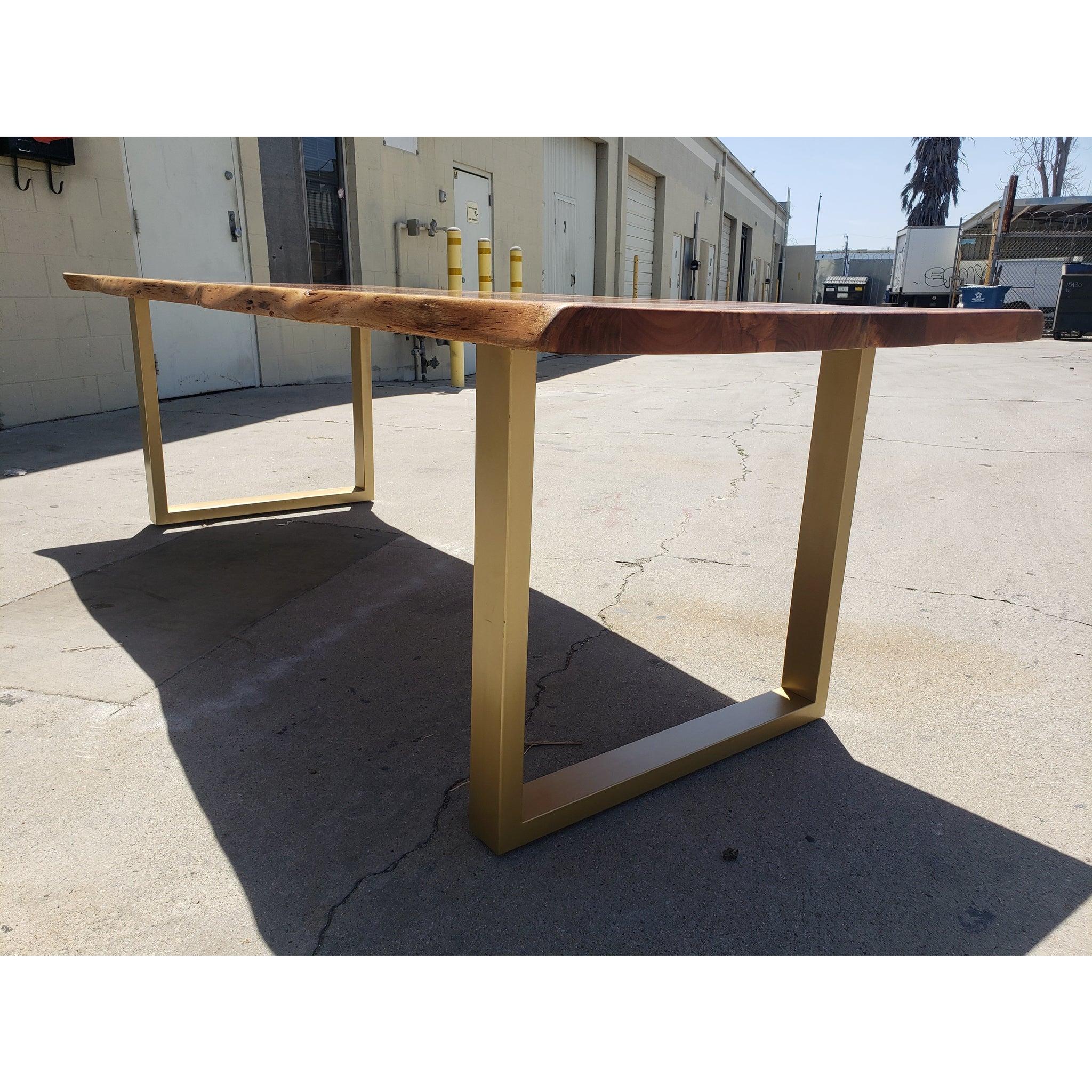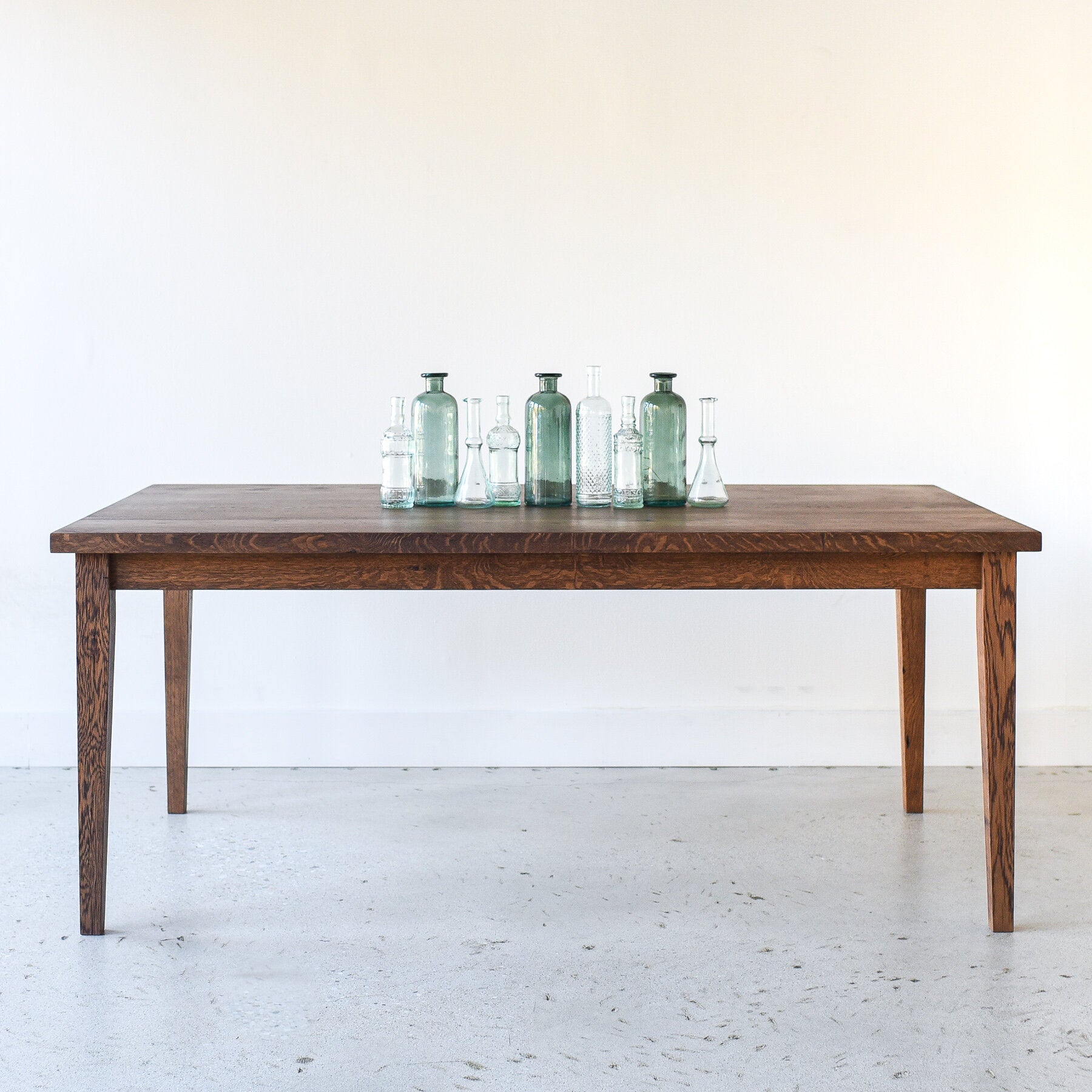Exploring the Various Kinds of Eating Table Legs Wood for Your Dining Area
The option of dining table legs wood can greatly affect both the functional and aesthetic top qualities of your eating room. Strong timber choices, such as oak and walnut, offer a traditional look with unmatched durability, while engineered timber choices offer ingenious layouts that imitate the richness of natural grains. In addition, the growing fad of recovered timber presents a sustainable aspect that interest ecologically conscious consumers. As we discover these numerous options, it becomes important to consider not just the aesthetic allure however additionally the useful ramifications of each product choice. What elements should guide your decision?
Solid Wood Options

In addition, strong wood is renowned for its strength and durability. Unlike engineered products, solid wood is much less susceptible to bending and damages in time when properly maintained. This makes it a perfect choice for family members or those that often organize gatherings. Each item of solid wood is one-of-a-kind, showcasing specific characteristics that contribute to the appeal and character of the eating table.
Furthermore, solid wood can be finished in various ways, ranging from natural oils to tarnished finishes, enabling property owners to personalize their furnishings to match their decoration. In recap, selecting solid wood for dining table legs not only makes certain architectural honesty however likewise enhances the visual allure of the dining location, making it a worthwhile investment for any kind of home.
Engineered Timber Alternatives

Plywood, built from several layers of timber veneer, is specifically solid and steady, making it an exceptional selection for eating table legs. Its layered make-up allows it to endure adjustments in moisture and temperature better than conventional strong wood. MDF, on the other hand, uses a smooth surface area for paint or veneering, making it possible for designers to accomplish a refined appearance while maintaining architectural honesty.
Particleboard, frequently utilized in economical options, offers respectable stamina and is lightweight, making it less complicated to deal with. It might not be as sturdy as plywood or MDF. When selecting crafted wood choices, it is necessary to consider the intended use and desired visual. These materials not only improve the capability of eating rooms yet likewise permit greater style adaptability, guaranteeing that modern and conventional styles can exist side-by-side sympathetically.
Reclaimed Wood Includes
Redeemed wood supplies a distinct blend of sustainability and character, making it an increasingly preferred choice for eating table legs. Sourced from old barns, manufacturing facilities, and various other structures, redeemed wood embodies a background that brand-new products simply can not reproduce. Each piece carries its very own story, marked by unique blemishes, knots, and varying grain patterns, which add to a table's special aesthetic charm.
In addition to its visual charm, redeemed wood is an eco friendly alternative. By repurposing previously utilized materials, it reduces the demand for new lumber, therefore aiding to decrease and save woodlands waste. This straightens with an expanding customer preference for sustainable practices in home furnishings.
Furthermore, redeemed wood is usually a lot more long lasting than freshly collected wood due to its age. The all-natural drying procedure that redeemed timber undergoes lead to a denser and stronger material, making it much less prone to warping and splitting. This boosts the longevity of eating tables, permitting them to withstand the rigors of everyday use.
Softwood vs. Hardwood
When choosing table legs, comprehending the differences between softwood and wood is critical for attaining both aesthetic and practical objectives. Softwoods, derived from coniferous trees, such as pine and cedar, are identified by their lighter weight and ease of control. They commonly display a more rustic appearance, making them appropriate for laid-back or country-style eating areas. Softwoods are typically much less resilient than hardwoods, which can be a consideration for families or those looking for long life in their furniture.
On the other hand, hardwoods, sourced from deciduous trees like cherry, oak, and maple, are renowned for their density, toughness, and resilience. The detailed grain patterns and abundant tones of hardwoods supply a timeless and innovative appeal, making them suitable for formal dining setups. While woods often tend to be more costly and larger, their durability versus deterioration commonly justifies the investment.
Inevitably, the option in between softwood and wood for eating table legs ought to straighten with your design vision, usage needs, and budget plan, making certain that your dining room mirrors your personal style while continuing to be functional in explanation time.

Finishes and Therapies
The aesthetic allure and durability of dining table legs can be substantially improved with different surfaces and therapies. These processes not just shield the timber from damages but also raise its appearance, permitting it to complement diverse interior styles.
One usual treatment is discoloring, which passes through the timber and improves its natural grain while adding color. Spots offer an abundant, stylish appearance, enabling house owners to match their furniture with existing decor. Alternatively, clear finishes such as polyurethane or varnish develop a safety layer without changing the wood's original hue, making certain durability versus deterioration.
Furthermore, all-natural oils, like tung or linseed oil, nourish the wood and provide a refined luster, all while being green. These oils allow the surface area to breathe, protecting against wetness accumulation and potential warping.
For those looking for a rustic beauty, click reference troubled or weathered finishes can be put on produce an aged appearance, adding personality to the piece. Inevitably, the option of treatments and surfaces depends on personal choice, wanted looks, and the certain timber kind, making it important to think about these factors when selecting table legs for your area.
Conclusion
Solid woods, crafted options, and redeemed alternatives each deal distinctive advantages, catering to this article various preferences and requirements. Eventually, the selection of timber kind must line up with wanted design, toughness, and environmental factors to consider, boosting the general dining experience.
The choice of dining table legs wood can profoundly affect both the practical and visual high qualities of your dining space - Dining Table Legs Wood. Solid timber alternatives, such as oak and walnut, supply a classic look with unmatched longevity, while engineered timber choices provide ingenious layouts that simulate the splendor of all-natural grains. Strong wood offers a timeless quality that can boost the overall design of a dining area. Each piece of strong wood is distinct, showcasing specific characteristics that add to the appeal and character of the dining table
Furthermore, reclaimed wood is typically a lot more sturdy than recently gathered wood due to its age.